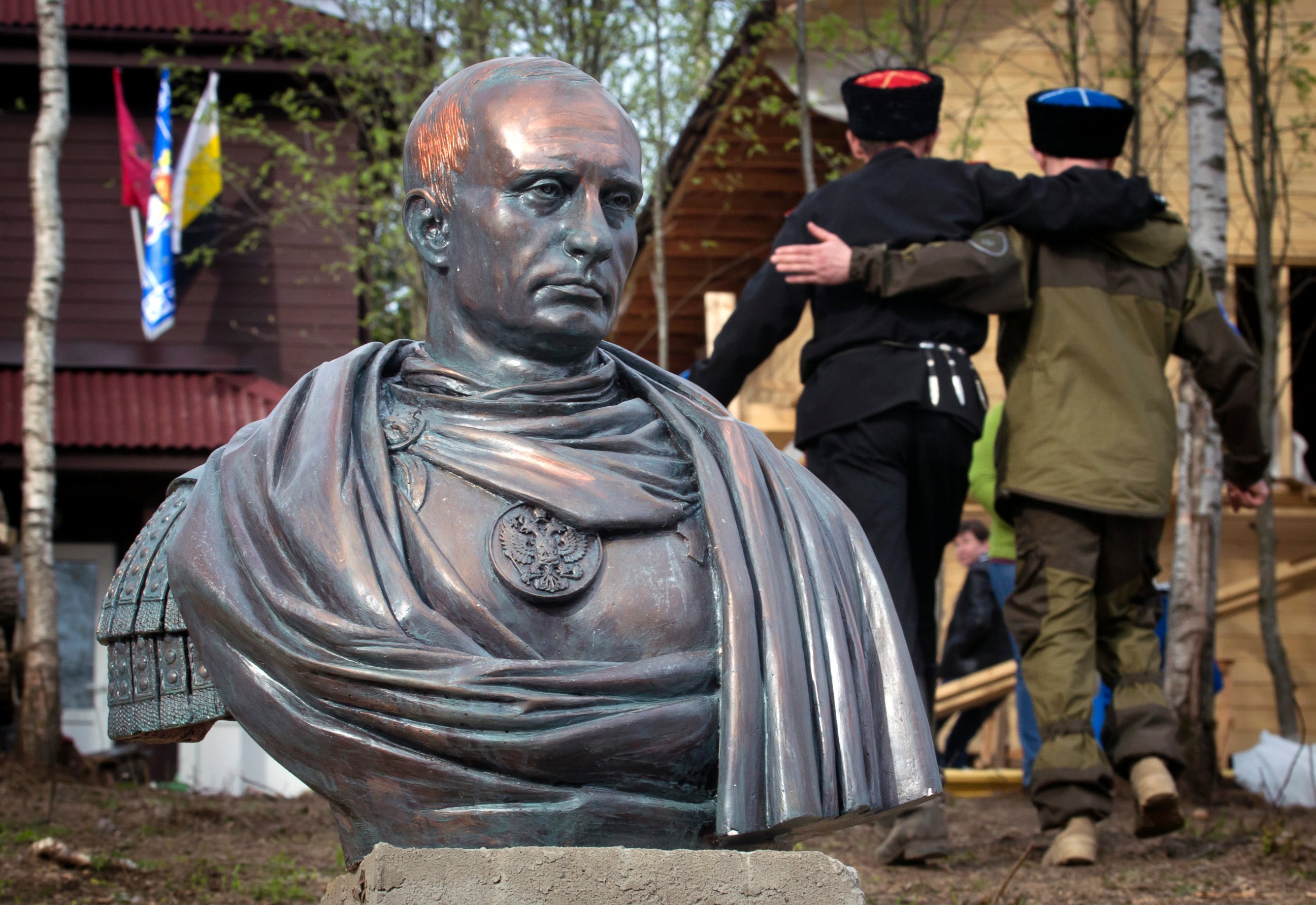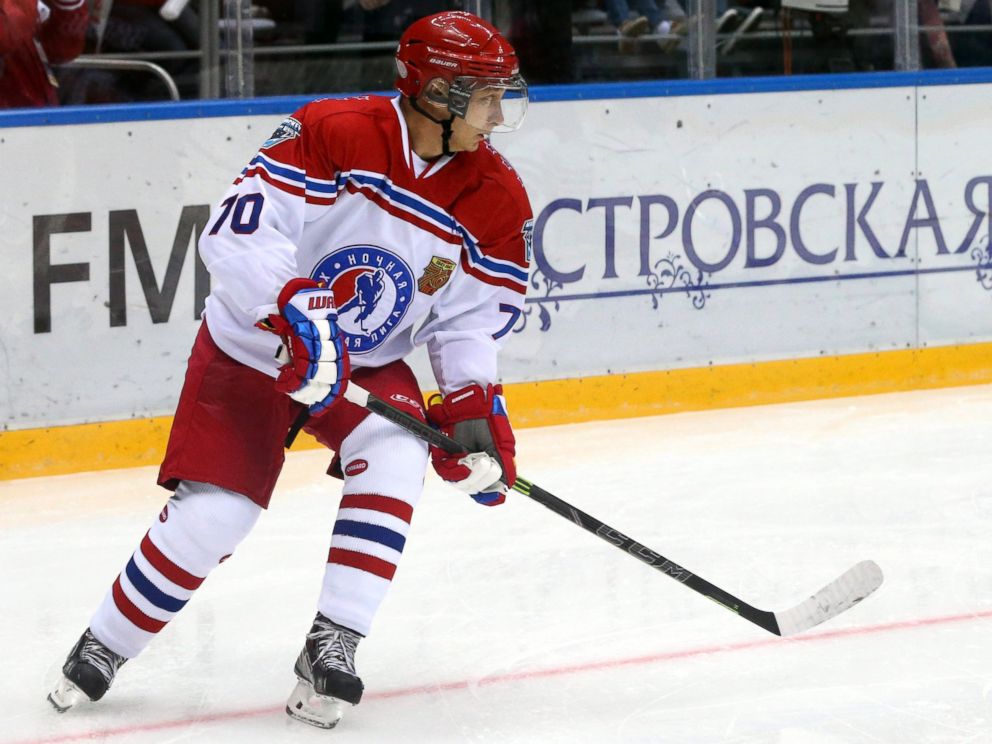Cossacks Install Monument of Russian President Vladimir Putin as Roman Emperor Near St. Petersburg
Cossacks install bust near St. Petersburg, Putin's hometown.

MOSCOW — -- Vladimir Putin has been described as a “czar” by fans and critics alike, but a group of Cossacks in St. Petersburg have gone a step further, erecting a statue of Putin in the form of a Roman emperor.
The 20-centimeter [7.9-inch] bust, erected by a group that supports Putin, depicts the Russian leader, head turned imperiously, wearing Roman laurels, armor and a cloak.
“In this image is the symbol of our Russian democracy,” Andrei Polyakov, who heads the Irbis Orthodox Union of Cossacks, which commissioned the statue for their new headquarters outside St. Petersburg, Putin’s hometown, told Russian media.
“Presidents come and go, but an emperor as a symbol is, I think, probably what Russia needs,” Polyakov told Reuters.

Even in a country where Putin is regularly feted as an embodiment of Russian strength and has been called a “gift of God” by the head of the Orthodox Church, the bust reflects how the cult around the Russian leader has reached new heights here as he rides a high of popular nationalism following his annexation of Crimea from Ukraine last year.
Recently, there's been a build-up of spontaneous and state-backed celebrations of Putin. Over the weekend, Russians were treated to the spectacle of Putin scoring no less than eight goals in an exhibition hockey match featuring ex-NHL stars.

This month, state TV screened an epic two-and-a-half-hour documentary during which a succession of Russia’s rich and powerful were wheeled out to express eyebrow-raised awe about the president -- his tireless energy, his sympathy with the people, his ability to learn new skills.
“One thing I don’t understand,” said Putin’s press secretary, Dmitri Peskov, in the documentary, “is where on earth he learned to play the piano!”
The Cossacks, almost folkloric figures themselves, have also been enjoying a renaissance. The horsemen have received increased state funding and were used as a militia during Crimea’s takeover.
Alexander Baunov, an analyst at the Moscow Carnegie Center, said that expressions like the bust reflect the more extreme end of Putin’s popularity here, but that overall most Russians would view the sculpture more or less positively.
“It’s a rather specific initiative of a rather marginal group. But these marginal groups are becoming more and more central. That is the problem,” Baunov said. “Many Russians like a strong leader. And for sure, it pleases these kind of people.”




